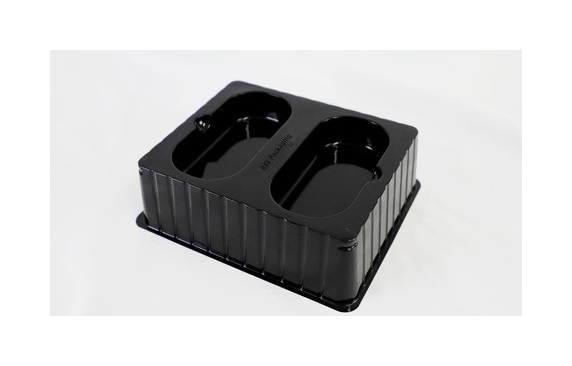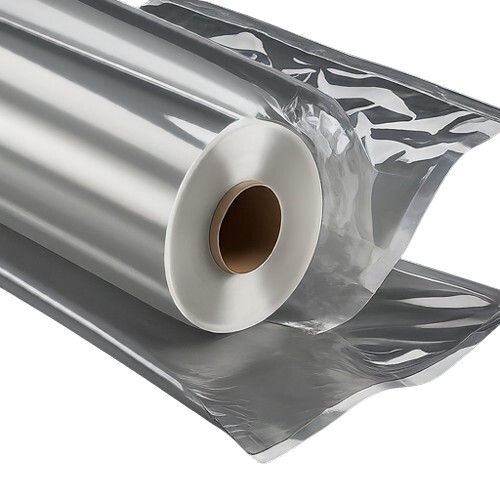
Characteristics of PTFE
Polytetrafluoroethylene (PTFE) is a synthetic fluoropolymer of tetrafluoroethylene that has a plethora of applications, ranging from non-stick pans to advanced electronics. Known for its non-reactivity, low friction, and high-temperature resistance, PTFE is a staple material in various industries.
Physical Properties
- Density: PTFE has a density of around 2.2 g/cm³. This relatively low density makes it a lightweight material suitable for many applications.
- Tensile Strength: PTFE possesses a high tensile strength, which allows it to withstand significant amounts of force without breaking.
- Elongation at Break: It can stretch considerably before it finally breaks, which adds to its versatility as a material.
- Coefficient of Friction: One of the lowest among solids, making it an excellent choice for applications requiring minimal friction like bearings and non-stick surfaces.
Chemical Resistance
- Inert Nature: PTFE is famously inert, making it resistant to a wide range of chemicals, including most acids, bases, and solvents.
- Non-reactivity: It does not react with many chemicals, making it an ideal choice for chemical processing equipment.
Thermal Stability
- Melting Point: PTFE has a high melting point of around 327°C, which means it can maintain its structure and integrity at elevated temperatures.
- Stability at Varying Temperatures: It retains its properties over a broad temperature range, from cryogenic temperatures up to its melting point.
Applications: Due to its thermal stability, PTFE is often used in applications such as heat exchangers and as a liner in high-temperature processes.
Vacuum Forming Process
Basic Principles
- Heating: The plastic sheet, usually made of materials like polystyrene, ABS, or PETG, is first heated until it becomes soft and malleable.
Forming: Once heated, the plastic sheet is stretched over a mold. A vacuum is then applied, pulling the sheet tightly against the mold to take its shape. Cooling and Release: After the plastic has conformed to the mold’s shape, it is cooled, which allows it to retain the new form.
Equipment and Setup
- Heating Element: It typically operates at power levels ranging from 1 to 10 kW, depending on the size and thickness of the sheet.
- Vacuum Pump: Essential for creating the vacuum needed in the process. Pumps generally operate at speeds of 250 to 1000 cubic feet per minute (CFM) to ensure rapid and uniform forming.
- Mold: This determines the shape of the final product. The cost for mold production can range from $1,000 for simple designs up to $10,000 or more for intricate, large, or multi-cavity molds.
- Frame: Holds the plastic sheet in place during heating and forming. The frame’s size depends on the size of the product, with typical dimensions ranging from 12×12 inches to 48×48 inches.
Common Challenges
Uneven Heating: If the plastic sheet is not heated uniformly, it can lead to imperfect forming. Proper monitoring of the heating element’s efficiency, usually around 85-95%, is essential to counteract this.- Webbing: Occurs when the plastic does not conform smoothly to the mold, resulting in wrinkles.
- Reduced Material Quality: Overheating can lead to degradation in the plastic’s quality. Ensuring the temperature remains within the material’s recommended range is crucial.
- Cost Constraints: High-quality equipment and molds can be expensive. It’s essential to balance the initial budget, possibly ranging from $5,000 to $50,000 for a basic setup, with the desired quality and efficiency of production.

Feasibility of Vacuum Forming PTFE
While vacuum forming is a popular method for shaping many thermoplastics, PTFE presents unique challenges and advantages in this context. By understanding its behavior under high temperatures, potential limitations, and successful case studies, we can better gauge the feasibility of vacuum forming PTFE.
Effects of High Temperature on PTFE
- Melting Point: PTFE has a melting point of 327°C. However, it’s crucial to control the heat accurately, as prolonged exposure can lead to degradation of the material.
- Thermal Expansion: Like all materials, PTFE expands when heated. PTFE’s coefficient of thermal expansion is around 135 x 10^-6/°C.
- Material Strength: Despite its high-temperature resilience, PTFE maintains a commendable tensile strength of about 15-30 MPa at elevated temperatures, ensuring it doesn’t tear or break during the process.
Potential Limitations and Considerations
- Cost: PTFE is relatively more expensive than many other thermoplastics. Depending on the grade and quality, PTFE prices can range from $15 to $50 per kilogram.
Formability: While PTFE can be vacuum formed, its unique properties, such as low coefficient of friction, might pose challenges in ensuring it adheres well to the mold. - Cooling Rate: Due to its excellent thermal stability, PTFE has a slower cooling rate compared to other plastics. This can affect the cycle time, and it might require specialized cooling techniques to speed up the process.
- Post-forming Operations: PTFE’s innate resistance to chemicals and adhesives means post-forming operations, like bonding or sealing, might require specialized methods or adhesives.
Successful Case Studies
Aerospace Industry: In the aerospace sector, vacuum formed PTFE components have been used in systems that require chemical resistance, such as fuel systems. The components’ lifespan often exceeds 20 years due to PTFE’s durability and resistance to harsh conditions.- Medical Field: Given its non-reactivity, PTFE has found applications in vacuum formed medical components, such as surgical instrument trays. These trays benefit from PTFE’s easy-to-clean and sterilize nature.
Comparative Analysis
PTFE vs. Other Thermoplastics in Vacuum Forming
- Melting Point: While PTFE has a melting point of 327°C, other common thermoplastics, such as Polyethylene (PE), have a lower melting point ranging from 105°C to 115°C. This means PTFE requires higher energy, resulting in slightly higher operational costs.
Cost: PTFE generally costs between $15 to $50 per kilogram, which is more expensive compared to PE, which usually costs $1 to $2 per kilogram. This cost difference can influence the material selection based on budget constraints.- Chemical Resistance: Few thermoplastics can match the chemical resistance offered by PTFE. For instance, while Polyvinyl Chloride (PVC) offers some chemical resistance, it is not as universally resistant as PTFE.
- Formability: Materials like Polystyrene (PS) or Polyethylene Terephthalate (PET) might be easier to vacuum form compared to PTFE because of their nature, allowing for quicker cycle times.
Benefits of Using PTFE
- Unmatched Chemical Resistance: As mentioned, PTFE’s resistance to a vast range of chemicals makes it invaluable in environments where chemical exposure is a concern.
- Thermal Stability: With its ability to function in temperatures ranging from cryogenic levels to its melting point, PTFE stands out as a thermally stable choice.
- Non-Stick Nature: PTFE’s low coefficient of friction means materials don’t easily stick to it, an advantage in many industrial applications.
- Longevity: PTFE components can have lifespans extending beyond 20 years, providing long-term value for investments.

Applications and Uses
Industries Benefiting from Vacuum Formed PTFE
- Medical Industry: The non-reactivity of PTFE is beneficial for creating medical tools and devices, ensuring sterility and preventing unwanted chemical reactions.
- Aerospace: Vacuum formed PTFE components can handle the rigors of aerospace applications, from fuel systems to heat shields.
Chemical Processing: Given its resistance, PTFE is a top choice for components exposed to aggressive chemicals, making it invaluable in the chemical processing industry. - Food Processing: PTFE’s non-stick nature and chemical inertness make it a safe and effective material for components in food processing machines.
Specific Products and Components
- Seals and Gaskets: Used in various industries to ensure leak-proof joints, especially where high temperatures or aggressive chemicals are present.
- Insulating Shields: In electronics, these shields protect components while offering thermal and electrical insulation.
- Non-Stick Molds: In food processing or any molding application, PTFE molds ensure easy release of products without the need for release agents.


